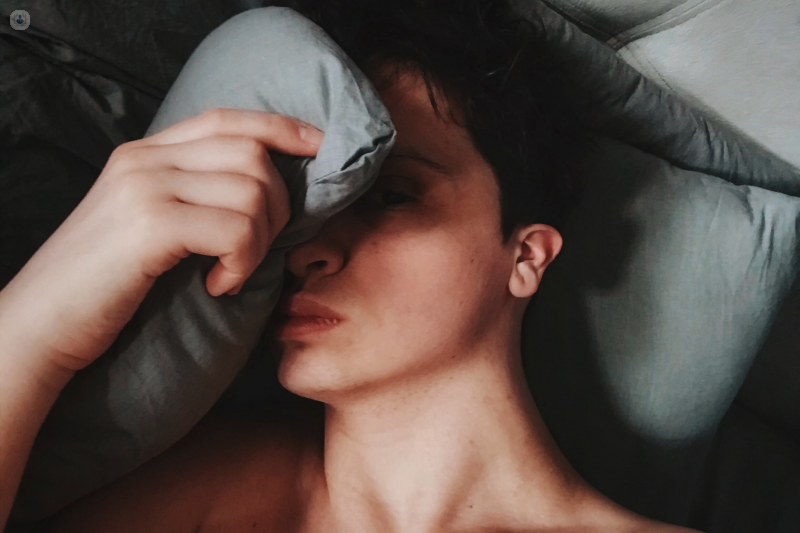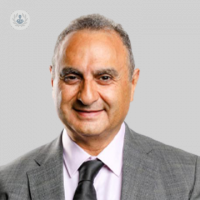Diagnosing and treating sleep apnoea in adults and children
Escrito por:Sleep apnoea is a potentially dangerous sleeping disorder that affects both adults and children. When the breathing stops and starts repeatedly while sleeping, the periods without breathing are known as apnoea. Highly regarded consultant ENT surgeon, Mr George Fayad, who specialises in sleep disorders shares his expertise on the topic. In our latest article, the London-based surgeon discusses the diagnosis and the treatment of sleep apnoea, and how it differs from adults to children.

How severe or dangerous can sleep apnoea become if left untreated?
Sleep apnoea can affect the whole body from top to toe. Sleep is essential for the normal functioning of all organs in the body, not just some. If left untreated, it will impact the body’s organs and increase the risk of stroke, high blood pressure, memory loss, and even impotence, just to name a few. For that reason, sleep apnoea needs to be treated.
How exactly is sleep apnoea diagnosed?
Diagnosing sleep apnoea in the lab can be quite complicated due to something known as the Schrödinger effect. Schrödinger was a scientist who wanted to study the behaviour of a cat in full darkness, however back then infrared light hadn`t been invented, so in order to make the conditions right for the experiment, he couldn’t see or carry out the test as planned. In science, the Schrödinger effect is any kind of test that is affected by the conditions of the test itself. Testing for sleep apnoea is a good example of this because if you attach someone to wires and they are not sleeping in their bedroom, they wouldn’t sleep in the same way as they do at home. This is why in the lab; the tests can be biased. We rely mostly on clinical findings, symptoms, and questionnaires. Nowadays, parents have been very good at using mobile phones to record their children, their breathing patterns at night, and when they gasp for air, which can help determine if there are periods of apnoea, meaning if they stop breathing during the night.
What are the most effective treatment options available for sleep apnoea?
Unfortunately, a magic wand to cure sleep apnoea doesn’t exist. In adults, there are surgical and non-surgical treatments, but the most important thing to address the issue is weight control and lifestyle modification. These may be adjustments like weight loss, quitting smoking, or changing eating and drinking habits to lead a healthier lifestyle which can have a huge impact on sleep quality. These changes must be done first.
The second option is surgery which is particularly necessary if there is an anatomical problem, like a blockage in the nose, throat, or airways. It is, however, not the ultimate solution. The gold standard for the treatment of sleep apnoea is a continuous positive airway pressure, or CPAP, a machine that blows air down your system at night and past the obstacle, wherever it is. Although it is a very effective treatment, compliance with it is very low. Patients are usually unwilling to wear a mask over their nose with a small pump beside their bed. Other options include a mandibular advancement system and more complex surgery.
In children, treatment is more time-critical. Often surgery is more effective than it is in adults, particularly by way of removing the tonsils and adenoids. It helps a lot and most of the time it cures the condition in children.
When should patients seek urgent medical help in relation to sleep apnoea?
The threat to life caused by sleep apnoea, in adults, isn’t imminent. Patients do not die from the condition, rather due to complications related to it. However, it is always good practice to treat the problem promptly due to its high mortality and its effect on health. Similarly in children, it is not medically a big emergency, but it should be dealt with more urgently.
Is surgery ever required? If so, when?
Surgery can sometimes be required, either because it can rid the patient of the problem completely, or as an adjunct to, for example, treatment with CPAP. If there is an obstacle in the nose, the CPAP machine would have to pump at a higher pressure, which decreases the patient’s tolerance for the treatment. Whereas if there is no obstacle causing a blockage, the pressure setting on the machine is lower and is more tolerable for the patient. Surgery would then be undertaken at the beginning of the treatment if it is required. However, surgery must be considered in the first instance for children before anything else.
If you are worried about sleep apnoea and would like to book a consultation with Mr George Fayad, you can do so by visiting his Top Doctors profile.


